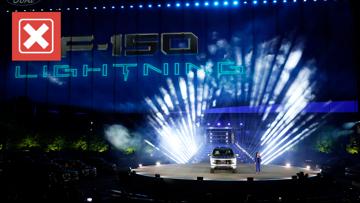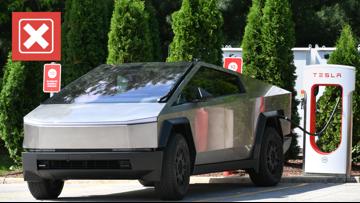Much of what Bill Gates does is put under a microscope. The Microsoft co-founder is a billionaire and one of the richest people on the planet. He is well-known for funding global health and vaccination projects, but, to the surprise of some VERIFY viewers, he’s involved in industries other than health and tech.
In mid-November, news outlets reported a Bill Gates-owned company was planning to build a nuclear power plant at a Wyoming coal site. The project was subjected to increased scrutiny when it was labeled “experimental.”
Several viewers have asked the VERIFY team if this plan was real. One viewer, John, sent an email simply asking if Bill Gates is really helping to build a nuclear power plant in Wyoming.
THE QUESTION
Is Bill Gates funding a nuclear power plant in Wyoming?
THE SOURCES
THE ANSWER
Yes. TerraPower, a company Bill Gates co-founded, has selected a retiring Wyoming coal plant’s location for a nuclear plant that will serve as the first ever “demonstration” of TerraPower’s new Natrium reactor.
WHAT WE FOUND
The Department of Energy (DOE) announced on Nov. 16 that TerraPower had selected a retiring coal plant in Kemmerer, Wyoming, a town northeast of Utah’s Salt Lake City, as the site for its Natrium nuclear reactor. DOE said the plant would utilize the coal plant’s existing energy infrastructure and would employ the coal plant’s former workforce.
TerraPower says it was founded by “Bill Gates and a group of like-minded visionaries” in 2006. Today, Bill Gates is the chairman of its board.
DOE called the Natrium reactor “first-of-a-kind” and plans to invest nearly $2 billion “to support the licensing, construction and demonstration” of the reactor by 2028. TerraPower, in its own announcement, said it would match the DOE’s investment dollar for dollar.
TerraPower’s reactor is part of DOE’s “Advanced Reactor Development” program in which the DOE is funding the development of nuclear energy technology in an effort to improve nuclear power.
Natrium utilizes an energy storage system that has been previously demonstrated in the solar power industry, TerraPower says. Natrium can then use that stored energy to increase its power output for several hours, which TerraPower argues is important for integrating it with renewable energy sources.
The other benefits of the Natrium reactor, TerraPower claims, is that it’s more fuel efficient than standard nuclear reactors, it’s cost efficient and therefore more likely to be commercially adopted and is mature enough in development that it can be commercialized before the end of the decade — which TerraPower says is necessary to reduce carbon emissions as soon as possible.
Natrium is based on a reactor that has been in testing for decades, which is why it’s more mature than other nuclear technology in development. It’s a sodium-cooled fast reactor, which differs from standard reactors cooled by water.
The World Nuclear Association lists a number of sodium-cooled reactors both within the U.S. and worldwide that are currently operating, near deployment or have historically operated since the 1950s — almost all of which were and are experimental, prototypes or demonstrations.
One of the benefits of sodium-cooled reactors is that sodium has a high boiling point, which means it’s less likely to boil away in an emergency situation and therefore less likely to suffer a nuclear meltdown. The Argonne National Laboratory (ANL) tested this in 1986 with its Experimental Breed Reactor-II. In two separate tests of situations that would normally cause a meltdown, the reactor’s temperature cooled to near normal operating temperatures after briefly heating up.
ANL said the EBR-II reactor operated safely and reliably for 30 years while providing all of the electricity to the site where it operated.
Other past sodium-cooled reactors, however, have demonstrated challenges TerraPower must overcome to make its sodium-cooled reactor safe. The Union of Concerned Scientists points out that sodium can burn, and even explode, when exposed to air or water, and past sodium-cooled reactor plants have had issues controlling leaks to prevent this danger. The Union of Concerned Scientists also points out that the Natrium reactor can’t use nuclear waste as fuel, which is one of the benefits of most sodium-cooled reactors.
An article from the American Nuclear Society says that as a “demonstration” plant, the Natrium reactor will be tested at a full commercial scale, unlike small prototype reactors. That means once it has been adequately tested to confirm it’s safe and viable, it can be immediately transitioned into commercial service.













